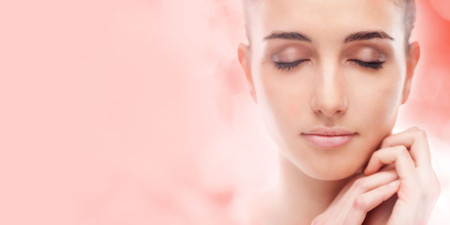Poltava, prospekt Vitaliia Hrytsaienka 9 Weekdays: 8:30-15:00, Weekend: weekend +38 (0532) 56-02-11+38 (095) 688 25 07
Implants for rhinoplasty: types, pros and cons
 Plastic surgery can drastically change a person's life. It allows reaching the generally accepted canons of beauty or eliminating the consequences of accidents and traumas. Today medicine successfully incorporates not only natural materials (cartilage tissue of the patient), but artificial ones as well.
Plastic surgery can drastically change a person's life. It allows reaching the generally accepted canons of beauty or eliminating the consequences of accidents and traumas. Today medicine successfully incorporates not only natural materials (cartilage tissue of the patient), but artificial ones as well.
When is the implant necessary?
The implants are often used to achieve the desired result in modern rhinoplasty. If nose plasty performed to reduce the nose's volume is a standard procedure, which causes no surprise to anyone, the operation with the use of the implant implies its increase to the contrary. This is necessary in the following cases:
- Trauma of the face which has led to its deformation;
- Too small nose;
- Correction of the width of the nose back or alignment of the septa;
- The need for plasty for tip of the nose;
- Unsuccessful primary operation, form deformation;
- The use of the technique is possible in case of correction of crook in the nose;
- The underdevelopment of a back of the organ occurs very occasionally.
Types of implants
Implants used in rhinoplasty can be made of porous or monolithic synthetic base. The most common types are:
- Polyethylene implants;
- Silicone implants;
- Hydroxyapatite implants;
- Polytetrafluoroethylene implants;
The choice of the base is always carried out by plastic surgeon performing the operation. If possible, preference is given to natural variants: cartilage allograft or auto-cartilage. This allows to avoid occurrence of allergic reactions.
Rhinoplasty using auto-cartilage
This technique is most popular and consists in moving of the patient's own cartilage tissue. The following areas can serve as sources of the basis for correction depending on the required size:
- Superficial part of the ribs;
- External ears;
- Part of the nasal septum.
The advantages of using auto-cartilage include the following:
- The body does not reject it;
- Low probability of infection;
- Fast healing;
- Absence of scarring;
- Excellent aesthetic result;
- Long-term effect.
 The disadvantages of the technique include the following:
The disadvantages of the technique include the following:
- Implementation of an additional incision used to remove the cartilage fragment of the desired size;
- There is a risk of implant resorption due to the extinction of chondrocytes (its base cells).
Cartilage allograft
Sometimes the patients refuse to use their own cartilage tissue no matter in which part the incision will be made (ribs, external ears, etc.). In this case, the surgeons apply cartilage allografts, which are the natural conserved donor fragments of cartilage.
The disadvantages of the method include the following:
- Possibility of implant rejection by the organism due to contact of immune cells with foreign body;
- The risk of infection is slightly higher compared to the previous method.
Artificial implants
The most common materials for the manufacturing of implants are: hydroxyapatite, polytetrafluorethylene, polyethylene and silicone. Their use allows shortening the operation time, as there is no need to allocate cartilage tissue. Only qualitative bases which have hypoallergenic properties, are non-responsive and are not subject to resorption (destruction) are used in plastic surgery. This allows them to live in the body without causing rejection. However, no artificial graft could surpass auto-cartilage by its characteristics.
Advantages and disadvantages of implants
Despite the fact that many surgeons are skeptical of artificial grafts, they are unanimous in the opinion that such a technique is irreplaceable in certain situations. Specialists distinguish the following advantages of their use:
- Artificial grafts do not lose their shape;
- Artificial grafts perfectly maintain the specified parameters of the nose;
- Artificial grafts are durable and are not prone to destruction (resorption);
- Artificial grafts eliminate the need to remove cartilage from other areas.
The main drawback is that they do not always take root, they can be inflamed and cause allergic reactions. However, do not forget that the result of the operation always depends not only on the quality of the materials used, but also on the level of qualification of the plastic surgeon.
specialists of the Clinic for Plastic Surgery
02-07-2018
Similar news
